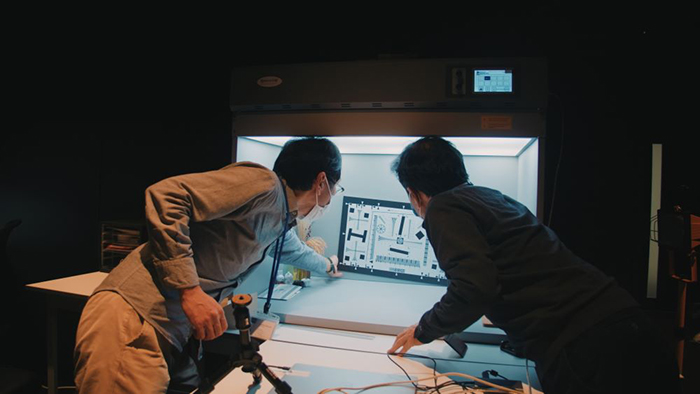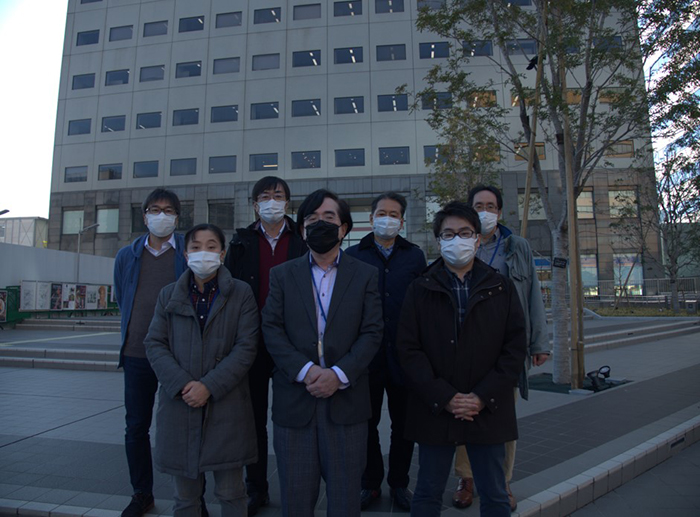When it comes to cutting-edge imaging technologies such as the ultra wide-angle camera, telephoto camera, and TOF camera, what do these have in common?
They are the “molecules” that make up a smartphone’s imaging module, and also form the hardware foundation for good imaging performance. To vivo, these imaging components mean much more: they also underpin vivo’s global R&D strategy.

Recently, vivo presented its Tokyo R&D center, with the Japanese expert team and interesting imaging technology R&D stories. Mr.Masazumi, Chief Expert of vivo Tokyo R&D center, unveiled more on the mystery of vivo’s international R&D.
Introducing vivo Tokyo R&D Center
In 2019, the vivo Tokoy R&D center was established in Shimbashi, Tokyo, and it set its sights on the pre-research and development of technologies that can be applied two years later.
Why does the center conduct pre-research two years in advance? Why was Tokyo chosen as the location for the research center? To answer these questions, we trace back to 2017 when the center was not yet established.
That year, the mobile phone market was fast-growing, with intense competition between older and newer brands.
When competition shifted from marketing to core technologies, “globalization”, a term frequently used by the trade and manufacturing sector, began to appear in the R&D sector. It was in that exact year that vivo decided to take a step ahead by announcing the launch of its global R&D strategy.
The vision behind the strategy is to make full use of valuable resources in different parts of the world to conduct different R&D work. The establishment of the vivo Tokyo R&D center was also based on this strategy.
“Japan has more than 100 years of history in mobile imaging development and has undergone huge transitions from film to digital imaging (including lenses, sensors, and motors).” Mr.Masazumi believes that mobile camera technology can only be developed on the foundation of a robust and mature imaging industry, which is precisely the biggest advantage of Tokyo as the location of the Tokyo R&D center.
However, R&D centers in different parts of the world also face some challenges. For example, while transitioning from R&D to mass production, prototypes need to fit into products manufactured in China, which are subject to continuous testing and improvement. The physical distance between the two places makes this process time consuming.
Another challenge is that Japan and China follow different hardware specifications, which poses great difficulties for the R&D team. In response, experts from the Tokyo R&D center recommend utilizing locally unique resources for R&D.
“Japan has many excellent suppliers, manufacturers, partners and universities. It is much better to tap on local resources.” Mr.Masazumi explained. It is one of the strategies that help the Center in solving various future challenges.
As the Tokyo R&D center grows, it has moved from Shimbashi to Gochome, Chuo-ku, the central area of Tokyo, and its focus has gradually expanded from mobile phone imaging to more niche areas such as car cameras, sports cameras, and industrial cameras.
These technologies have not fully emerged in China market. But with the launch of the vivo signature gimbal camera and the completion of vivo’s global manufacturing bases, the successful application of the above technologies is worth looking forward to.
vivo’s Blueprint for The Future with Consumer Needs at Its Core
In vivo’s corporate culture, being user-oriented remains the main principle guiding vivo’s R&D work. Whether it is the gimbal camera, the V1 imaging chip, these are all based on vivo’s insights and overall review of consumer needs.
However, it is not easy for R&D centers in different markets to adhere to this principle. As “outsiders”, they have difficulties gaining insight to and understanding the latest consumer feedback and consumer demand changes in other markets.
In order to catch up with the latest insights, the Center frequently had face-to-face meetings with the headquarter team in China to discuss the latest data and technology trends. After the outbreak of the pandemic, the two teams began to shift more of their discussions online.
“Although we rely on online meetings most of the time now, we actually communicate more and the exchange of information is smoother than ever,” said Mr.Masazumi. The planning/product team in China analyzes future research trends of smartphone imaging based on user feedback. This information is then shared with the Tyoko R&D team.
In this process, Mr.Masazumi realized that the demands of Chinese and Japanese consumers are sometimes quite similar. “Chinese as well as global consumers have higher expectations of HD imaging but there is less and less space left for the lens module within the phone itself.”
Given this contradiction, Mr.Masazumi believes that one major direction of future imaging hardware development is to make it “miniaturized and integrated”. He further explained: “camera lenses now are generally assembled. In future, they might all be integrated into one piece, with sensors that are more sensitive and faster.”
The Setting of Tokyo R&D center is the epitome of vivo’s global R&D strategy. In 2017, vivo proposed that its technological research would no longer focus on single aspects but would focus on innovation of the smartphone as a whole.
To achieve this goal, vivo has 10 R&D centers in Shenzhen, Dongguan, Nanjing, Beijing, Shanghai, Hangzhou, Xi’an, Taipei, San Diego and Tokyo, which are devoted to the development of cutting-edge consumer electronics technologies and services, including 5G, artificial intelligence, industrial design, imaging system and other up-and-coming technologies.

COMMENTS